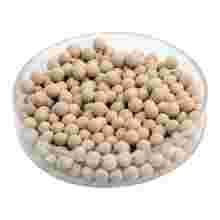Column chromatography is a technique that is widely carried out for the separation of components of the mixture and owing to the easy setup of the process it is used for the purification of drug metabolites and compounds of industrial importance. As this method provides high accuracy, it is also used for the analysis of complex organic mixtures. Chromatography is a physical method of separation which helps in separating the components based on their distribution between two phases: stationary phase and mobile phase. Stationary phase can be in the form of porous bed, bulk liquid or thin layer of the adsorbent and mobile phase is the fluid that runs through the stationary phase.
Column chromatography involves the preparation of column using silica gel or aluminium oxide, mobile phase is then allowed to run through the column to cause the separation of desired component. The separation of the compound is based on its affinity towards the mobile phase and stationary phase. Because of the factors that affect separation; each component of the mixture moves differently in the chromatographic system, some stay longer and move slowly through the system while others leave the system faster by rapidly moving into the mobile phase.
Column chromatography has gained much importance over the years due to its easy setup, low cost operations and effective results in less time. Below are the three main divisions of chromatography differing in the mechanism of separation and are used for various purposes like separation, identification, purification, qualitative and quantitative analysis of compounds:
- Adsorption Chromatography
Adsorption chromatography is also known as liquid-solid chromatography in which component is retained based on their affinity with the stationary phase and retention of any component wholly depends on the competition of the analyte with compounds of the mobile phase for the binding sites on the stationary phase.
Retention in adsorption chromatography depends on following factors:
- How strongly the compound can bind to the stationary phase
- the surface area of the stationary phase
- the volume of mobile phase being displaced from the stationary phase by the compound to be separated
- How strongly the mobile phase binds to the stationary phase.
- Also, interactions via hydrogen bonding, van der Waals forces and dipole-dipole interactions can influence retention in this chromatography.
Adsorption chromatography is further classified into:
- Column Chromatography– In column chromatography, stationary phase is packed into column which is run over by the mobile phase to separate the desired component from the mixture. Here, silica gel is the most commonly used adsorbent for packing the columns and they are available in different particle sizes ranging from 40 μm to 63 μm as appropriate particle size is used for different molecules. The results of column chromatography depends hugely on how well the column is prepared and developed with the mixture of solvents or a particular solvent (solvents are selected based on the polarity of molecule to be separated) that leads to successful elution of the component.
- ii) Thin Layer Chromatography- In this chromatography, a thin layer of adsorbent is smeared onto the slide and kept aside to let air-dry. Then, sample is applied to the plate and put inside the container containing the mobile phase. The plate should be kept in such a way that the level of mobile phase stays below the spotted sample. Solvent travels up the plate by capillary action, moving the components of the sample at different rates depending upon their degrees of interaction with the stationary phase and solubility in the mobile phase. Mostly the thickness of silica gel layer varies between 200 μm to 250 μm.
- Partition Chromatography
It is the process in which mixtures are separated in columns or on the filter paper and separation occurs due to the differences in partition coefficient of two solvents. Here, both stationary and mobile phase are liquid so it requires the use of support material to hold the stationary phase in place. Other separation techniques like High performance liquid chromatography and gas chromatography also work on the basic principle of partition chromatography in which the components of the mixture get distributed into either of the two liquid phases differing in their partition coefficients. Partition chromatography is further classified into:
- Liquid-Liquid chromatography: In Liquid-liquid chromatography, columns are prepared with liquid by absorbing it to the surface of the column as stationary phase. This chromatography is not as popular as the other methods because the prepared column offers a limited stability and hence, inconvenient to use. Here, separation occurs based on the differences between partition coefficients of liquids of stationary and mobile phase.
- Gas-Liquid Chromatography: In gas-liquid chromatography, inert gas is used to move the substance (to be separated) along the tube filled with finely powdered silica gel in a diatomaceous structure which is further protected by the coating of waxy polymer.
- Ion Exchange Chromatography
This chromatography is used for the separation of ions and molecules that are susceptible to ionization. Here, Separation depends on the affinity of ions towards the stationary phase, which results into the generation of ion exchange system. Separation happens with electrostatic interactions occurring between the analytes, mobile phase, and the stationary phase. Only charged complexes can interact with their respective charged ion exchangers.


















